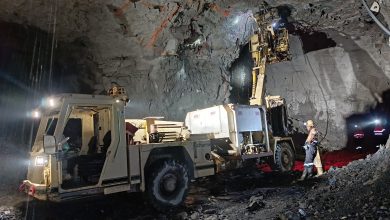
ESG disclosure demands on the increase in Africa
Sustainability-related disclosure is evolving rapidly across Africa, driven by increasing awareness of environmental, social, and governance (ESG) issues and the need for greater transparency and accountability in business practices.
According to Philippa Burmeister, partner and principal environmental scientist at SRK Consulting, the Johannesburg Stock Exchange (JSE) has been a leader in this field on the continent, aligning with stock exchanges in Europe and North America by requiring listed companies to produce integrated reports that include sustainability information.
“The African Securities Exchanges Association (ASEA) is also behind this important agenda, and is working towards harmonising sustainability reporting standards across member exchanges – promoting best practices and consistency in ESG disclosures,” said Burmeister. “Similarly, the African Development Bank (AfDB) is actively promoting sustainable development and encouraging companies to adopt ESG reporting through various initiatives and funding programmes.”
Disclosure practices
She highlighted that most disclosure practices in Africa are being shaped by international organisations and requirements such as the Global Reporting Initiative (GRI), the Sustainability Accounting Standards Board (SASB) and the Task Force on Climate-related Financial Disclosures (TCFD).
“International lenders, responsible for much of the funding for projects within Africa, also require assessment and reporting in terms of the TCFD as part of their investment decision making,” she said.
While the TCFD has completed its mandate and has been dissolved, the Financial Service Board (FSB) has requested the International Financial Reporting Standards (IFRS) Foundation to assume responsibility for overseeing companies' progress with climate-related disclosures.
“The IFRS released the IFRS S2 Sustainability Disclosure Standard in June 2023, which guides climate- related disclosures, and this has been issued by the International Sustainability Standards Board (ISSB),” she explained. “The standard requires entities to disclose information about their climate- related risks and opportunities.”
The requirements of the IFRS S2 Standard are consistent with the TCFD Recommended Disclosure, but go further. While TCFD provides a flexible, voluntary framework specifically focused on climate- related risks and opportunities, the IFRS S2 is part of a broader sustainability reporting framework with more detailed and integrated requirements.
“These two standards require reporting of both transitional and physical climate risks,” said Burmeister. “Climate-related transitional risks refer to risks that companies face as a result of the transition to a lower carbon economy. Climate-related physical risks, on the other hand, refer to the risk of climatic changes on infrastructure and operations.”
This evolution of more complex and in-depth disclosure requirements – and the need for assessment as part of investment decision making – has demanded the development of specialised expertise in the consulting space. This includes services to address both climate transitional and physical risks.
“For transitional risks, clients need access to skills such as greenhouse gas quantification and transitional risk assessment,” she said. “Consulting teams of mining engineers are also developing skills in decarbonisation, so that engineers can draw on their mine design experience to identify and design options that are suitable for specific sites.”
On the climate physical risk side, skills are required in climate change projection, preferably incorporating a range of different disciplines and with independent peer review.
“These new demands are leading to the development and advancement of specialised tools. Tools to create long-term meteorological datasets and downscale climate change projections to ensure they are sist specific and the risks identified are applicable to the site being assessed”. These tools will be critical in the identification of potential physical risks and inform measures required to adapt to the changes.






